As described in a recent post, dental conditions are often hidden and painful. The following posts are going to help describe conditions that pets can get as well as treatment. Many people I talk with are surprised how we can help pets with dental conditions and save teeth whenever possible.
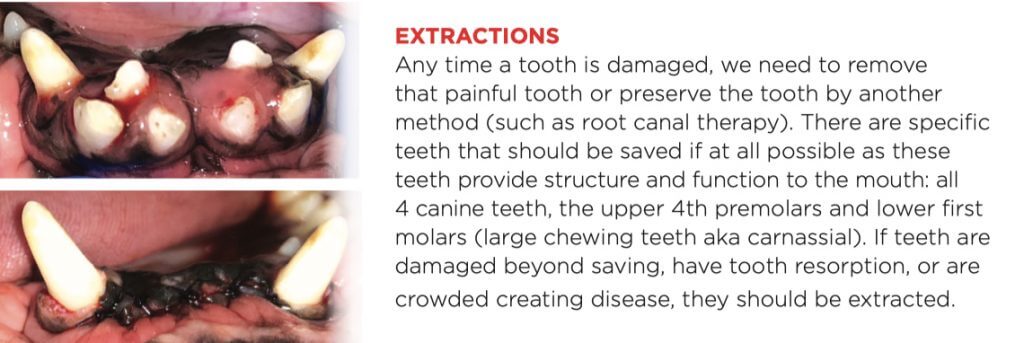
The above image explanation sums up the need for extractions well. The strategic structural teeth (the canines and carnassials) should be saved instead of extracted as long as the gum and bone surrounding the tooth margin (periodontium) are adequately healthy.
This tooth has a draining tract:
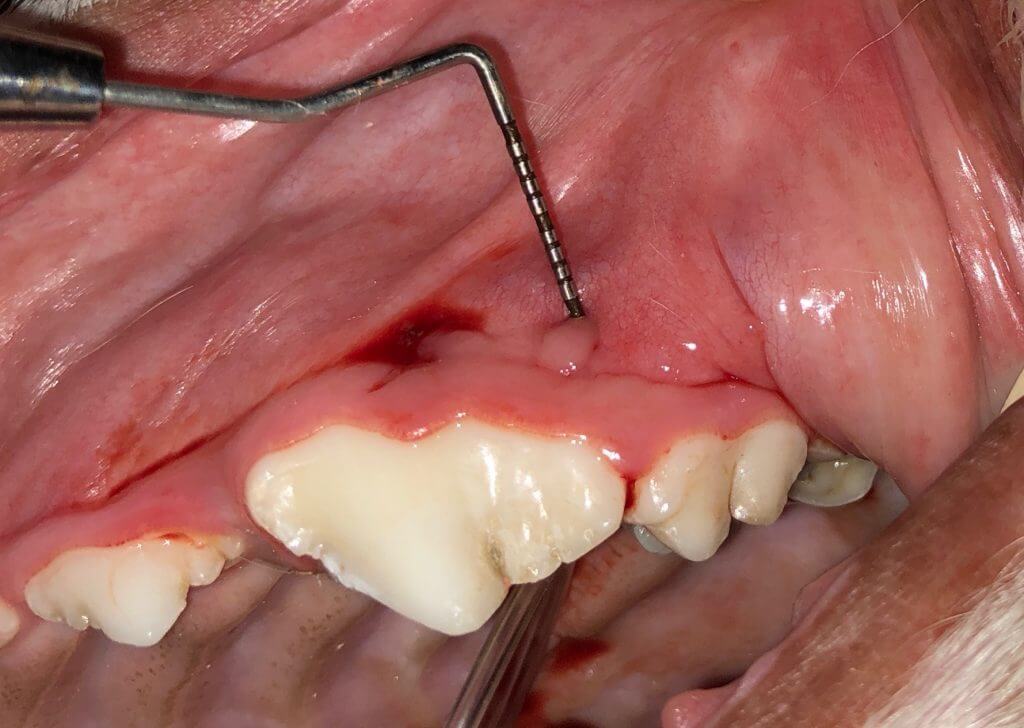
Much surrounding bone has been lost due to disease (outlined in blue). As the gum cannot reattach without supporting bone and the space between the two roots has missing bone, extraction is the best choice even though this is a strategic tooth:
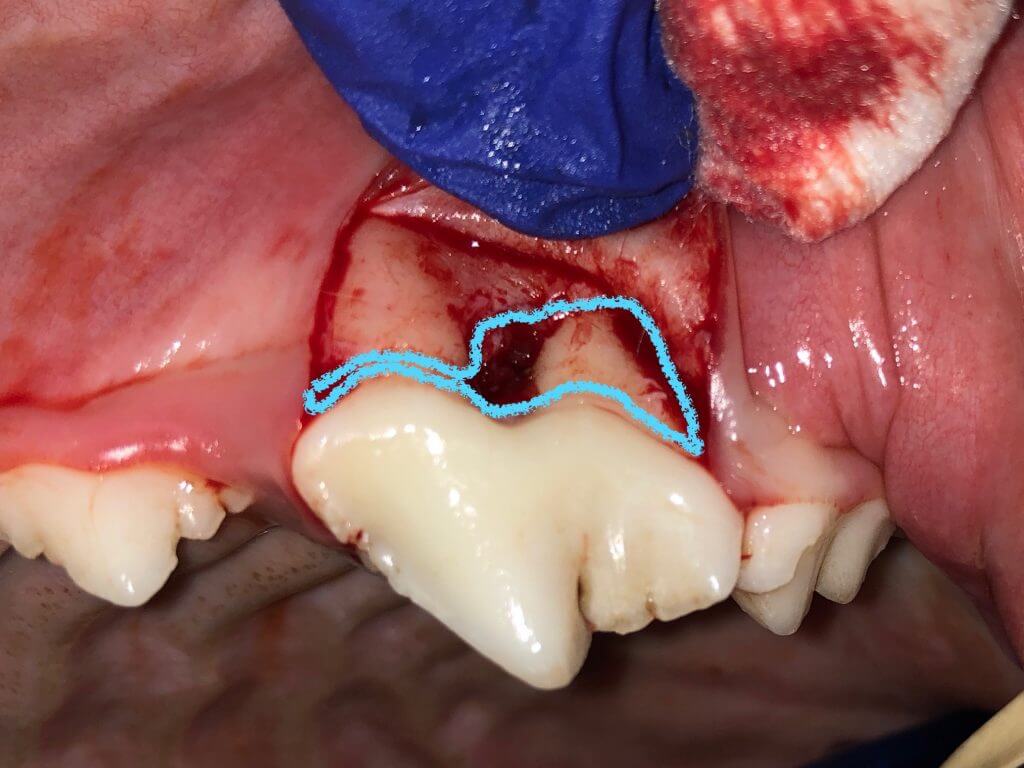
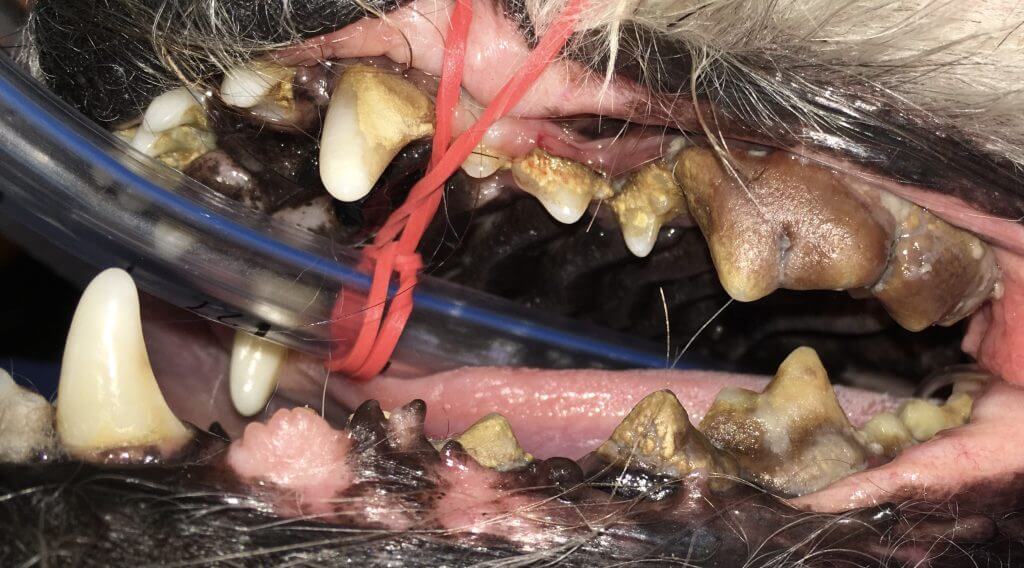
Dogs typically have 42 teeth and all but 8-10 have significant function. Teeth may be extracted as part of the therapy for a painful bite:
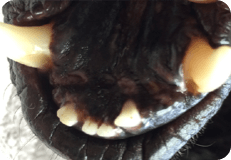
Tooth roots need to be removed in entirety (with the exception of replacement resorption) or may cause problems as shown below and in the baby teeth section.

Tooth roots need to be removed in entirety (with the exception of replacement resorption) or may cause problems as shown below and in the baby teeth section.
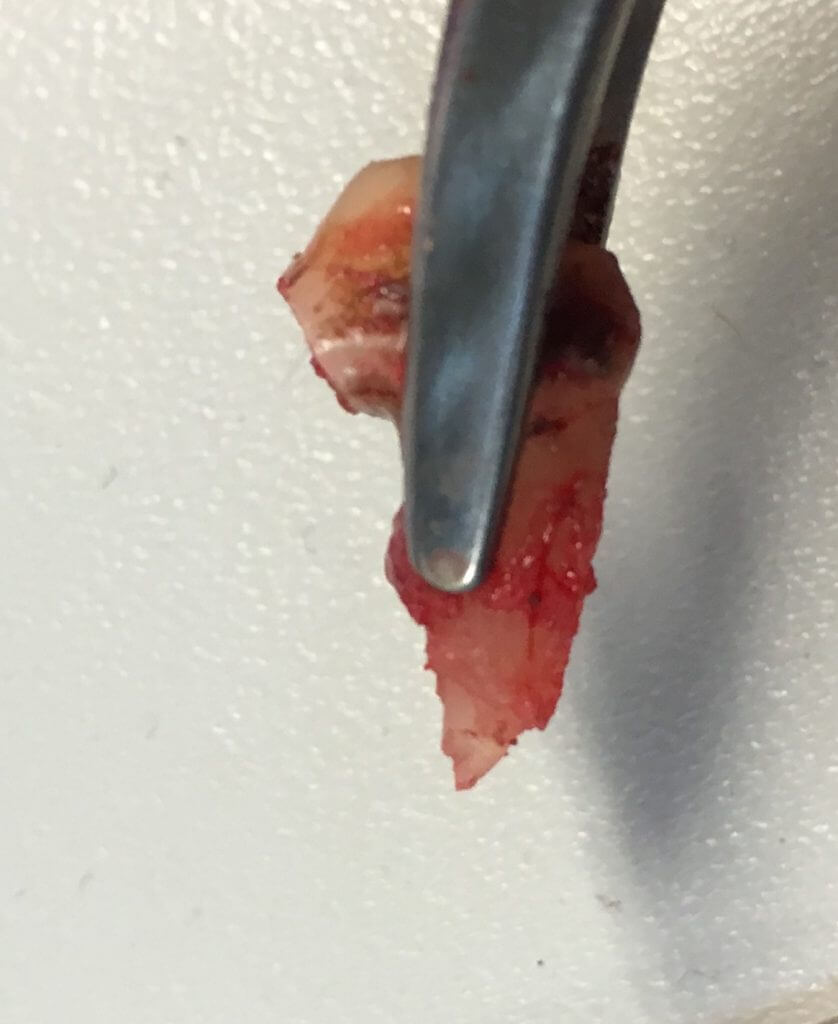
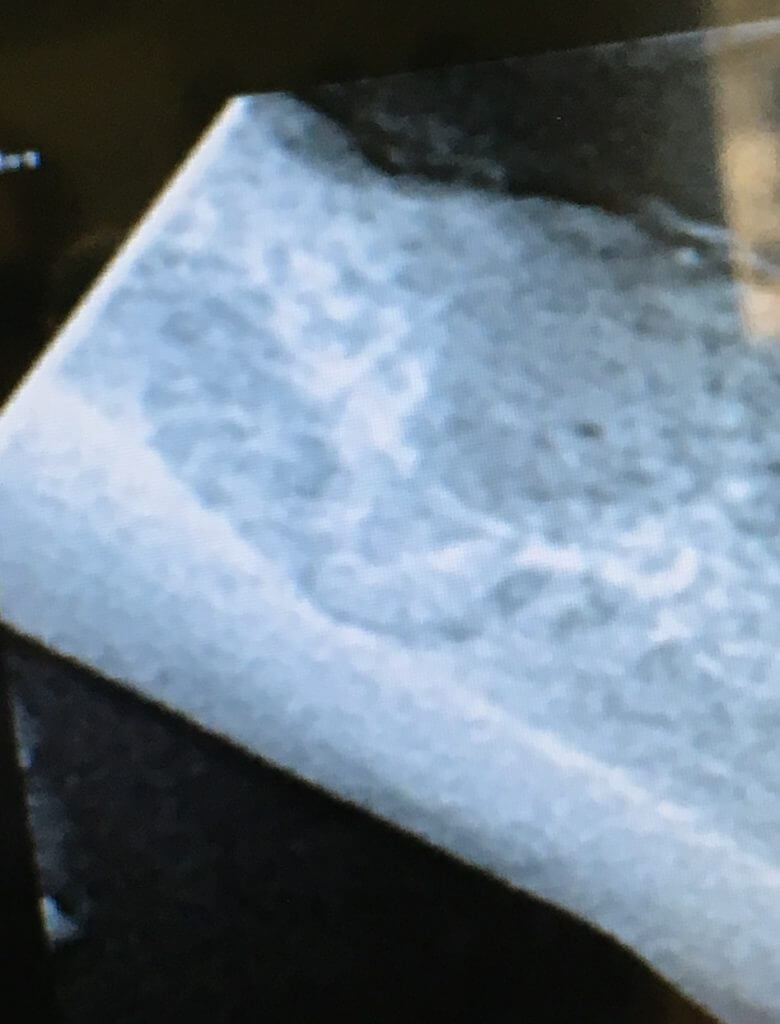
Sometimes we take out teeth that are not yet diseased but will cause it (rotation):
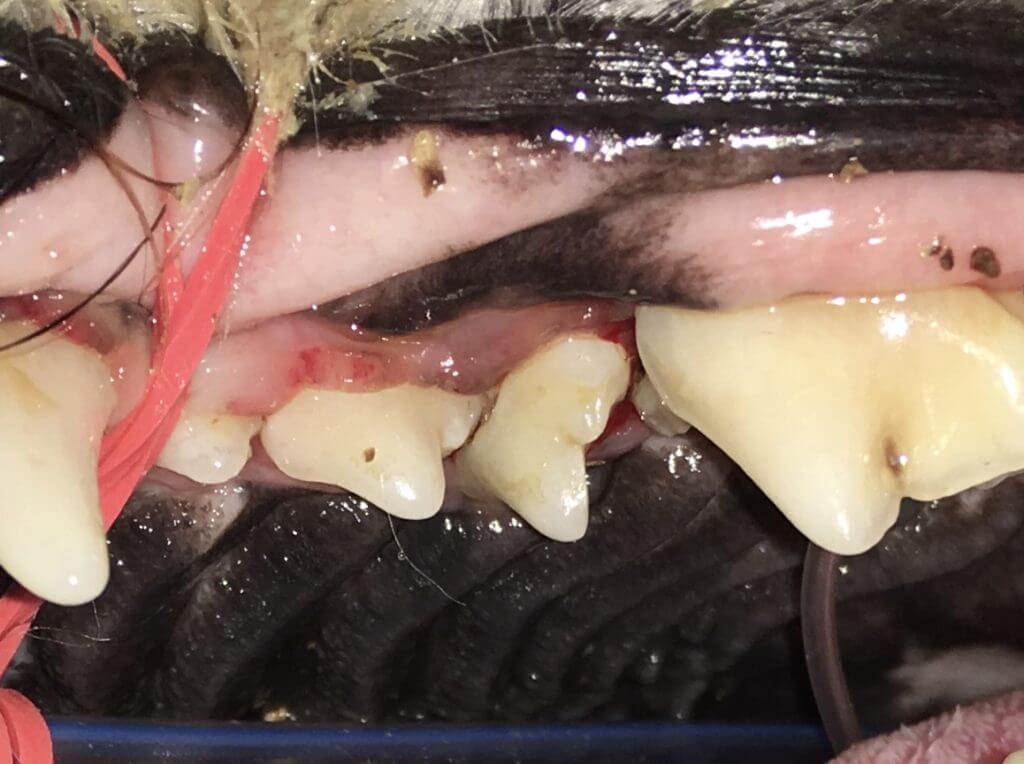
Other times teeth have malformations requiring extraction:
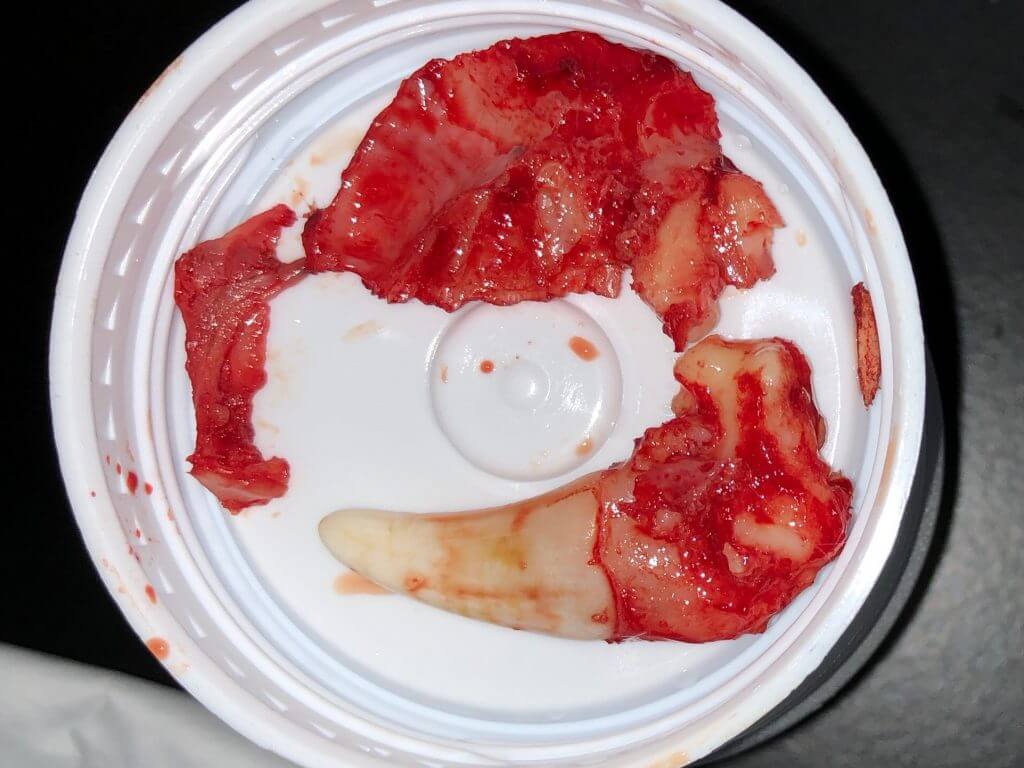
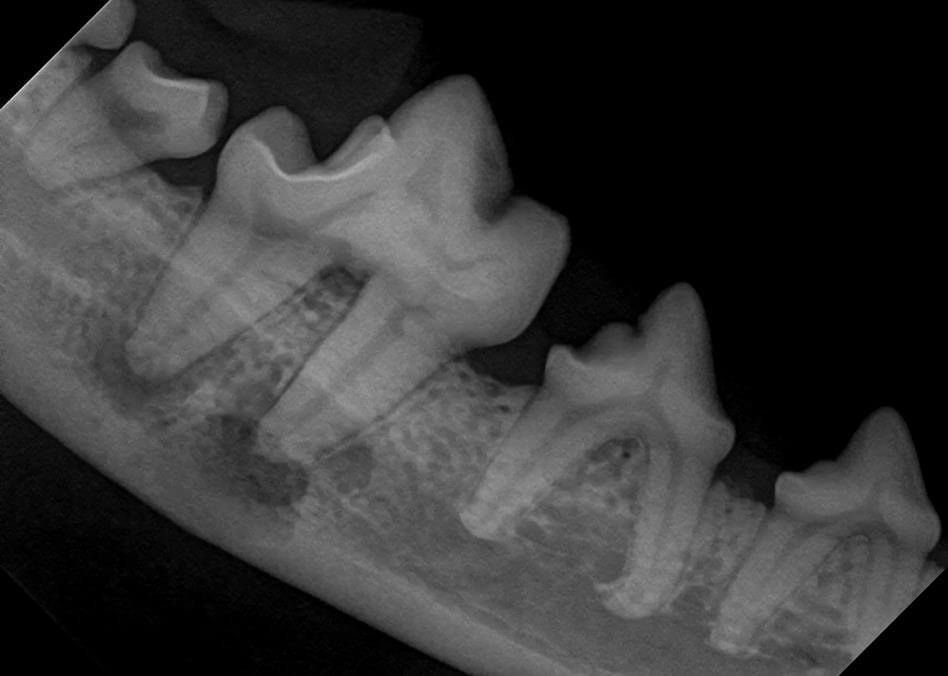
When extracting teeth, there is risk of jaw fracture when appropriate anatomy and forces are not observed or when the bone health is compromised as imaged above. While fractures can be repaired, some conditions require bone grafts or special techniques. The goal with these techniques is to save structure and in some cases, preserve teeth:
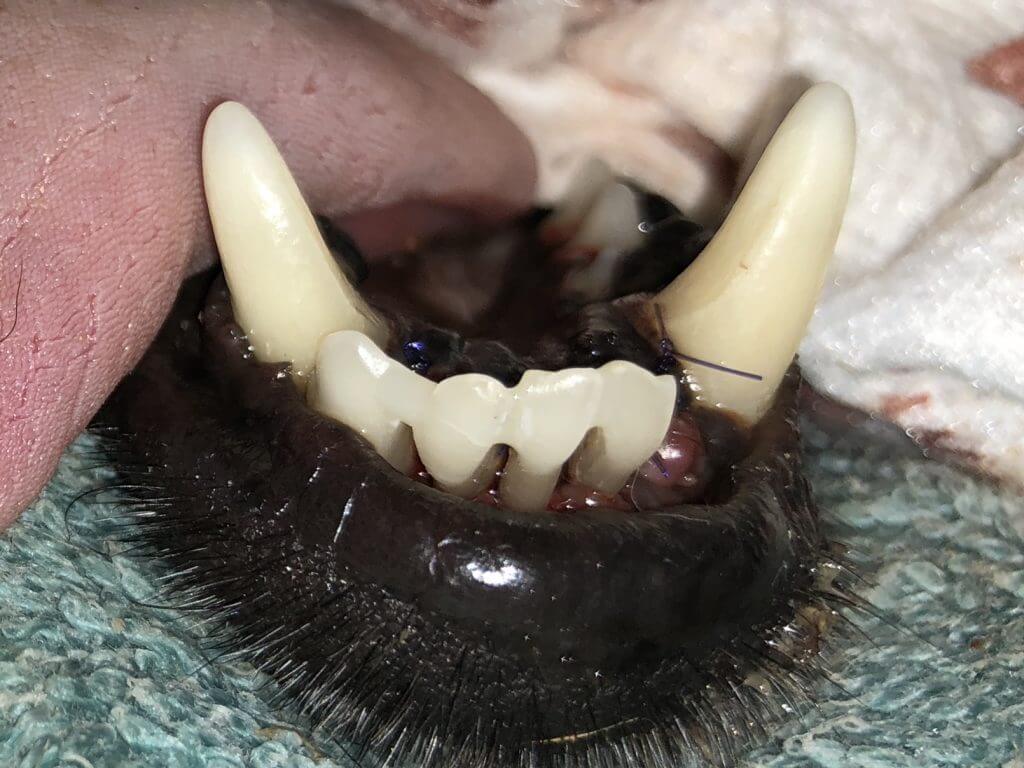
When performing extractions, oral surgical techniques must be used to close the site (unlike common practice in humans).
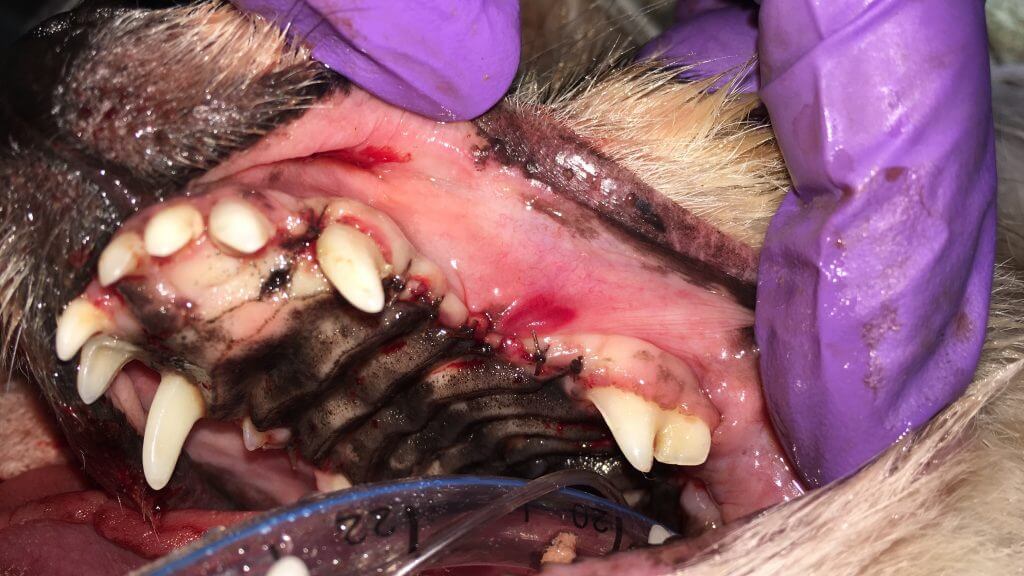
Won’t a pet have trouble eating with missing teeth? Dogs and cats do fine with missing teeth, but an opposing tooth does not have the natural cleaning action and may perpetuate periodontal disease. A missing opposing tooth can also result in trauma to soft tissues. Sometimes this can be corrected with tooth shortening, other times extraction is again required. Exotics with continuously growing teeth that require extraction, the opposing tooth often needs extraction as well.
As mentioned in the stomatitis post, this situation usually needs caudal mouth or full mouth extractions. These patients usually benefit from a few days of tube feeding through the esophagus as the mouth heals.
Contact us to learn more about dental care in your pet.
